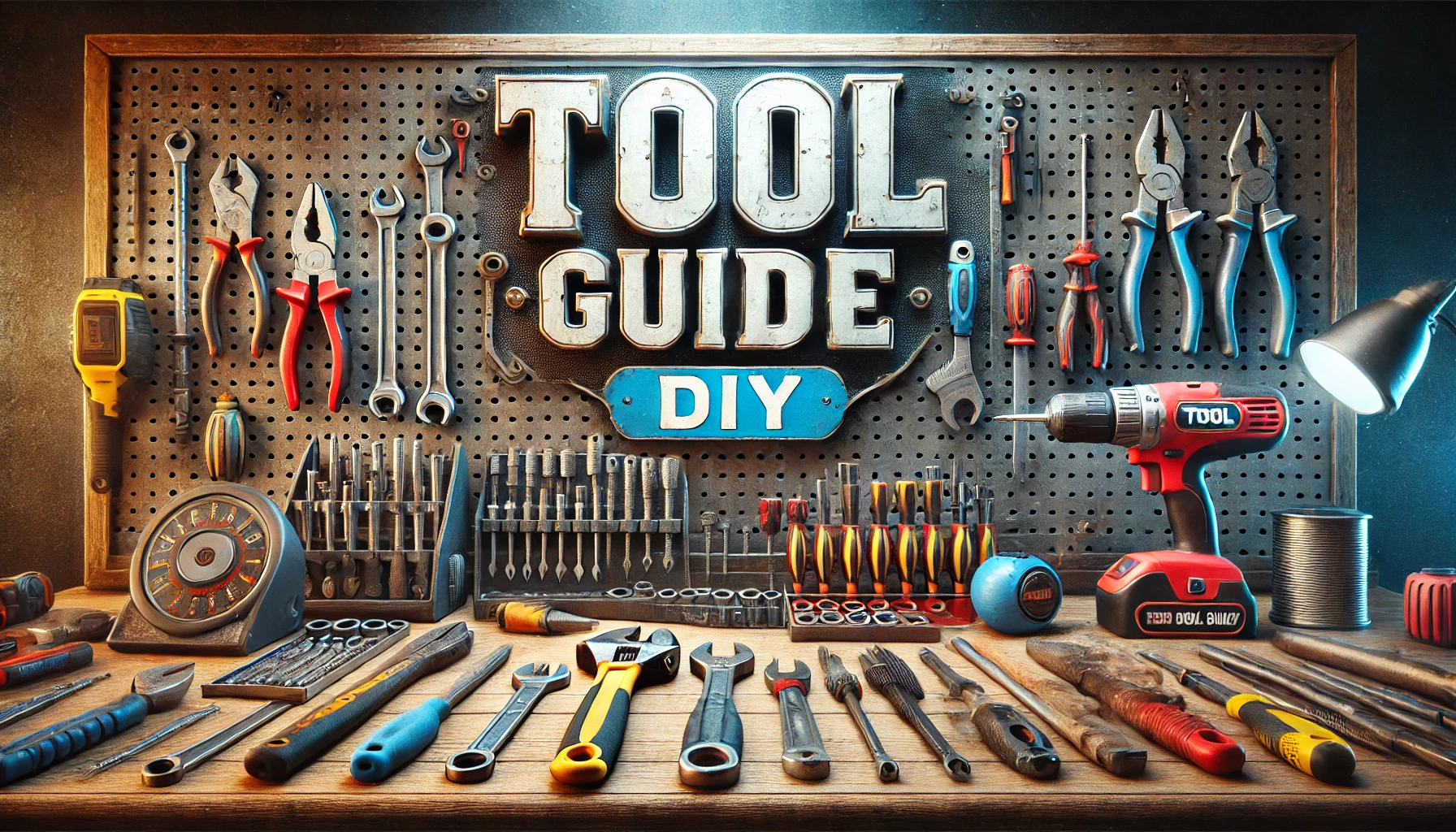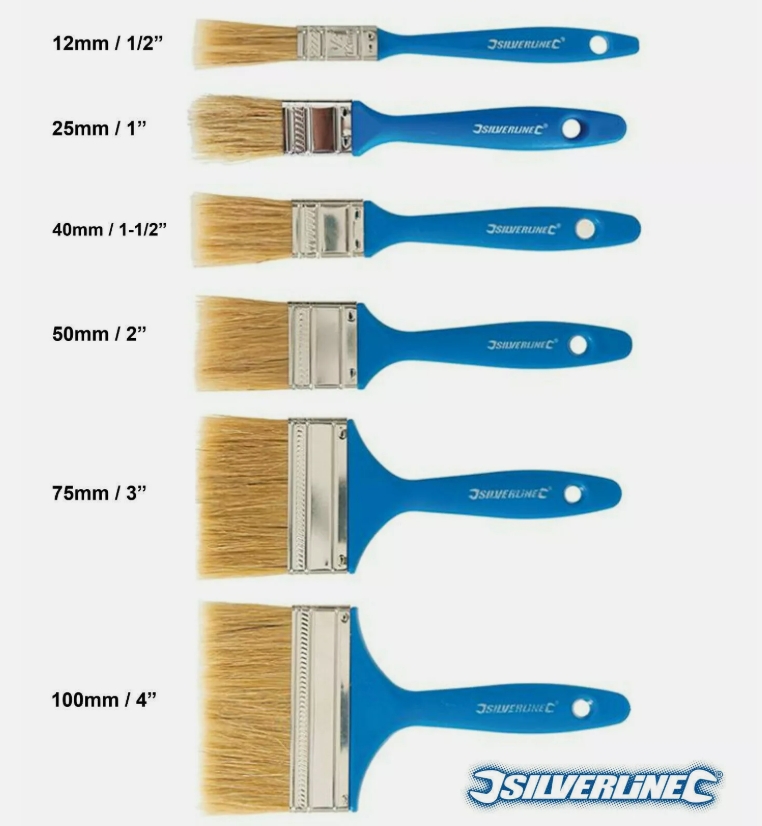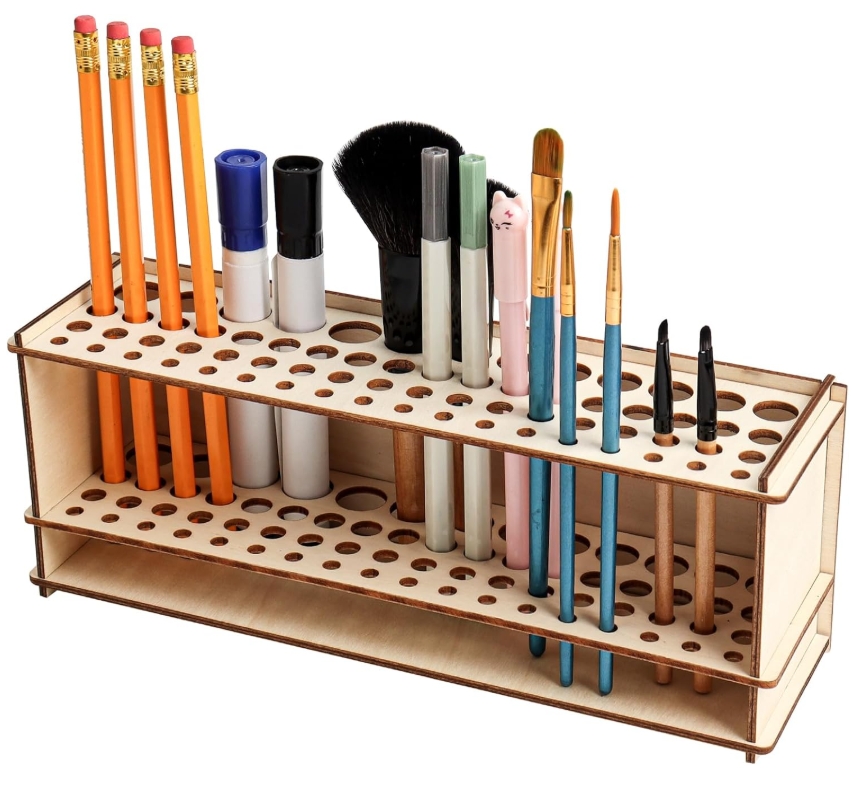The Ultimate Guide to Paint Brushes 2025
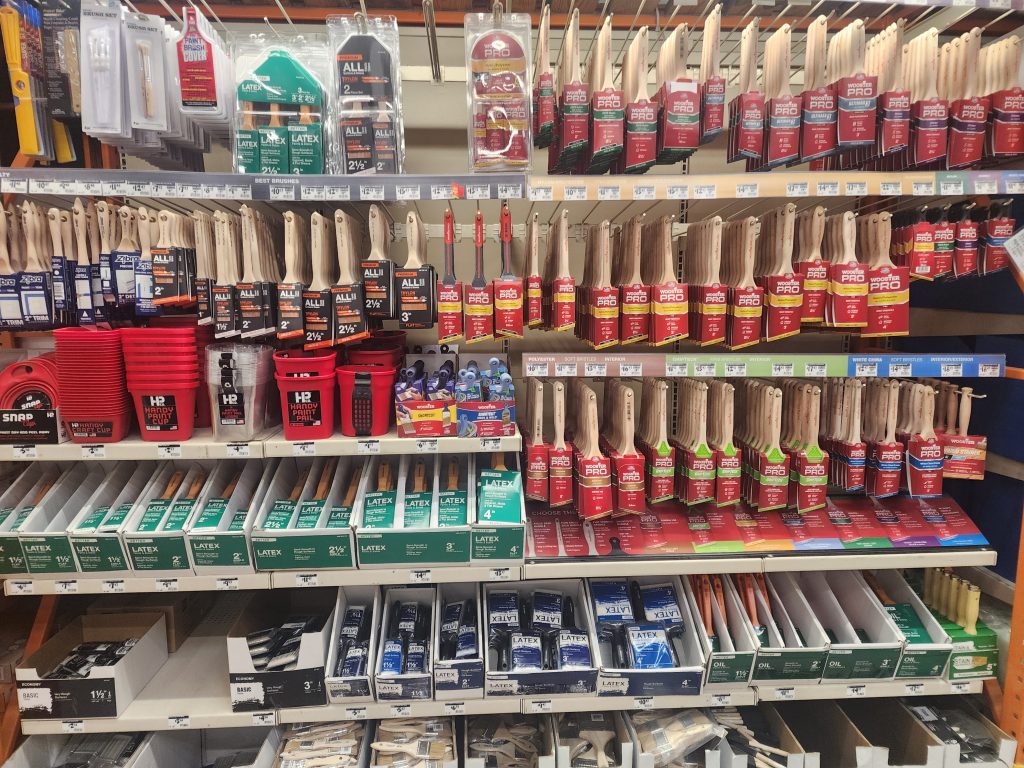
Introduction: The Importance of Choosing the Right Paint Brush for Your DIY Success
Welcome to the Ultimate guide to paint brushes. Embarking on a do-it-yourself painting project can be an exciting endeavor, offering a chance to personalize your living space or breathe new life into old furniture. At the heart of a successful paint job lies a seemingly simple tool: the paint brush. Often overlooked, the choice of brush can profoundly influence the ease with which paint is applied, the quality of the resulting finish, and ultimately, your satisfaction with the completed project. Selecting the appropriate brush is not merely a minor detail; it is a fundamental decision that can transform a potentially frustrating task into a rewarding experience. This ultimate guide to paint brushes aims to demystify the world of paint brushes, providing DIY enthusiasts with the essential knowledge to confidently select the perfect tool for any painting task they might encounter in 2025. By understanding the nuances of brush types, sizes, composition, and quality, individuals can equip themselves to achieve professional-looking results in their own homes.
Decoding the World of Paint Brushes: Types and Their Uses
The vast array of paint brushes available can initially seem overwhelming. However, by understanding the fundamental categories based on shape and bristle type, DIYers can begin to navigate the options with greater clarity.
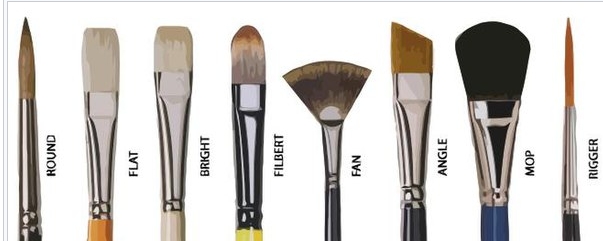
Paint Brush Shapes: A Detailed Look
Flat Brushes: Characterized by their broad, flat head, these brushes are ideally suited for covering large, even surfaces such as walls, tables, and the flat panels of cabinets. Their design allows for smooth, consistent coverage, making them excellent for applying both base coats and topcoats with efficiency. For extensive projects like painting a large tabletop or the side of a cabinet, wider flat brushes, such as those measuring 2.5 or 3 inches, are particularly effective in minimizing the number of strokes required. The broad bristles ensure that paint is distributed evenly across the surface, reducing the likelihood of streaks or uneven patches, which is especially beneficial for beginners seeking a flawless finish.
Round Brushes: In contrast to flat brushes, round brushes feature a more concentrated bristle arrangement, making them the preferred choice for tasks demanding detail, achieving textured finishes through techniques like stippling and dry brushing, and navigating curved surfaces such as furniture spindles and chair legs. The rounded shape of the bristles allows for exceptional control over paint application, enabling DIYers to create fine lines, intricate designs, and delicate patterns with precision. Whether adding decorative accents to a painted piece or working on the contours of a detailed object, round brushes offer the maneuverability needed for intricate work.
Angled Sash Brushes: A staple for achieving professional-looking edges and transitions, angled sash brushes are specifically designed for “cutting in” around edges, mouldings, corners, and trim. The bristles are cut at a distinct angle, providing better control and allowing the brush to fit neatly into tight spaces where walls meet ceilings or trim meets walls. This angled design enables DIYers to paint crisp, straight lines without the need for extensive taping, a technique that significantly enhances the overall finish of interior painting projects.
Oval Brushes: Representing a versatile hybrid, oval brushes combine the characteristics of both flat and round brushes, making them an excellent option for blending paints and working effectively on surfaces that are both flat and curved. Their ergonomic design often provides added comfort, which is particularly valuable for DIYers engaged in longer painting sessions. The unique shape allows for good paint coverage on flat areas while still offering sufficient control for navigating gentle curves, making them a practical all-around choice for various DIY projects.
Pointed Sash Brushes: For highly specialized tasks requiring access to very tight corners, detailed woodwork, or the intricate carvings found on some furniture and cabinetry, pointed sash brushes are the ideal tool. Their finely tapered bristles can reach into the smallest crevices and tightest corners, ensuring a smooth and precise finish in areas that other brush shapes might struggle to access. DIYers involved in furniture refinishing or antique restoration often find these brushes indispensable for their ability to handle delicate details.
Specialty Shapes: Beyond the core shapes, several specialty brushes cater to specific needs and artistic techniques. Filbert brushes, with their rectangular shape and rounded tip, offer a balance between coverage and detail, making them suitable for applying base coats and also for creating finer elements such as flower petals. Fan brushes, characterized by their splayed, fan-like tip, are excellent for creating natural textures such as shrubbery and clouds, as well as for blending colors and achieving unusual artistic effects. Foam brushes, made from dense foam, are particularly useful for achieving exceptionally smooth finishes on surfaces like cabinetry, furniture, and trim, especially when using latex and acrylic paints, as they tend to minimize brush strokes. Understanding these specialized shapes allows DIYers to expand their painting capabilities and achieve specific visual outcomes.

Bristle Types Explained: Natural vs. Synthetic
Natural Bristles: Derived from animal hair, such as hog, ox, sable, and badger, natural bristles have been the traditional choice for certain types of paint and coatings. They are best suited for use with oil-based paints, varnishes, shellac, stains, and clear coats. Hog bristle, often referred to as China bristle, is known for its strength and springiness, making it ideal for creating textured looks and for painting subjects like animal hair. The highest quality hog bristles often come from the Chungking region of China. Ox hair offers a soft, silky texture coupled with good resilience, making it suitable for medium-grade wash brushes and flat brushes, and it is frequently blended with other natural fibers. A key characteristic of natural bristles is their split ends, known as “flagging,” which significantly enhance their ability to hold and release paint evenly, contributing to a smoother finish. While traditionally paired with oil-based media, natural bristles can also be used to create a textured, vintage aesthetic with water-based paints. However, it’s important to note that natural bristles are not recommended for use on rough surfaces, as this can cause the delicate tips to break.
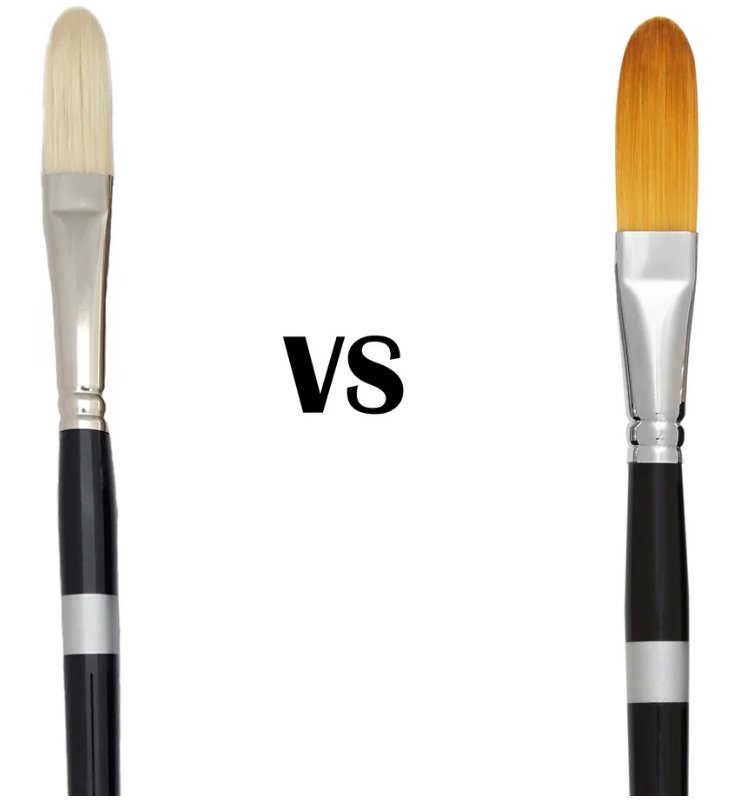
Synthetic Bristles: As an alternative to natural hair, synthetic bristles are typically manufactured from materials like nylon, polyester, or a combination of both. These bristles are particularly well-suited for water-based paints such as latex and acrylics. Synthetic brushes often provide smooth, brushstroke-free finishes, a desirable outcome for many DIY projects. They are also known for their ability to maintain their shape and control, even when exposed to heat, a factor that can be important for exterior painting or projects in warmer environments. Generally, synthetic bristles are more durable and easier to clean compared to their natural counterparts, making them a practical choice for DIYers. Within the realm of synthetic bristles, different materials offer specific advantages. Nylon bristles are recognized for providing smooth finishes and effectively picking up paint, though they may soften in hot weather or with prolonged use in latex paint. Polyester bristles tend to maintain their shape well but might not pick up paint as efficiently. A popular choice among professionals and increasingly among DIYers is the nylon/polyester blend, which seeks to combine the positive attributes of both materials, offering a balance of precise tipping, excellent paint pickup, smooth finish from nylon, and added stiffness and control from polyester. Specialized synthetic filaments like Chinex® and certain types of nylon are engineered specifically for modern paints, offering superior paint pickup and production along with a smooth, professional finish and easy cleanup. While natural bristles are traditionally favored for oil-based paints, high-quality synthetic brushes can be versatile and used with all paint types, though the optimal choice often depends on the specific coating.
Blended Bristles: For DIYers who occasionally work with both water-based and oil-based paints, brushes featuring a blend of natural and synthetic bristles can offer a compromise. These brushes aim to provide smooth finishes and overall versatility, potentially offering a good balance of paint holding capacity and ease of cleaning.
Matching the Brush to the Task: Selecting the right brush shape and bristle type is further refined by considering the specific task at hand. For painting walls, wider flat brushes, typically ranging from 3 to 4 inches or even up to 6 inches, are recommended for efficient coverage of large, uninterrupted surfaces. When it comes to trim and edges, angled sash brushes in the 1 to 2.5-inch range are ideal for achieving clean lines and precise application along woodwork, mouldings, window frames, and baseboards. For tighter corners, a smaller 2-inch angled brush can provide enhanced maneuverability. When painting furniture and cabinets, flat brushes around 2.5 inches wide are often suitable for the narrower flat surfaces of cabinet doors and baseboards. Additionally, foam brushes can be an excellent choice for achieving an ultra-smooth finish on these surfaces, especially with latex and acrylic paints. For detailed work, such as intricate designs, carvings, and tight spaces, smaller round, angled, or pointed sash brushes are the best options. Detail brushes with a size below 4 are generally recommended for the finest tasks. When applying varnish and stains, natural bristles are frequently preferred for oil-based products, while synthetic bristles are better suited for water-based formulations to prevent the natural fibers from splaying. For DIYers interested in art projects, a diverse range of brush shapes, including round, liner, wash, angular wash, and fan brushes, can be employed to achieve various artistic effects.
Size Matters: Navigating Paint Brush Dimensions
Understanding paint brush sizes is crucial for selecting the right tool for a specific project. However, it’s important for DIYers to recognize that sizing conventions are not universally standardized across all manufacturers, which can sometimes lead to confusion. Typically, a brush size is indicated by a number printed on the handle, which generally corresponds to the thickness, length, and width of the brush head’s hair or filaments.
Understanding Standard Sizing:
Numbered Sizes: For many brush types, especially round brushes, sizes are denoted by numbers that generally range from 20/0, representing the smallest sizes used for very fine detail work, up to 24 or even larger numbers for brushes designed to cover broad areas. In this numbering system, smaller numbers indicate smaller brushes, and the increments between sizes can vary; smaller brush sizes typically increase by one (e.g., 1, 2, 3), while larger sizes, generally from size 8 upwards, often increase by increments of two (e.g., 10, 12, 14).
Width in Inches/Millimeters: For flat brushes and varnish brushes, sizing is often more straightforward, with the size directly referring to the width of the brush head in inches (e.g., 1”, 2”) or millimeters (e.g., 20mm, 50mm). These measurements provide a clear indication of the area the brush can cover in a single stroke, making it easier for DIYers to select appropriate sizes for different surfaces. Decorators’ brushes, which are often used for larger surface areas, also commonly use this width-based sizing.
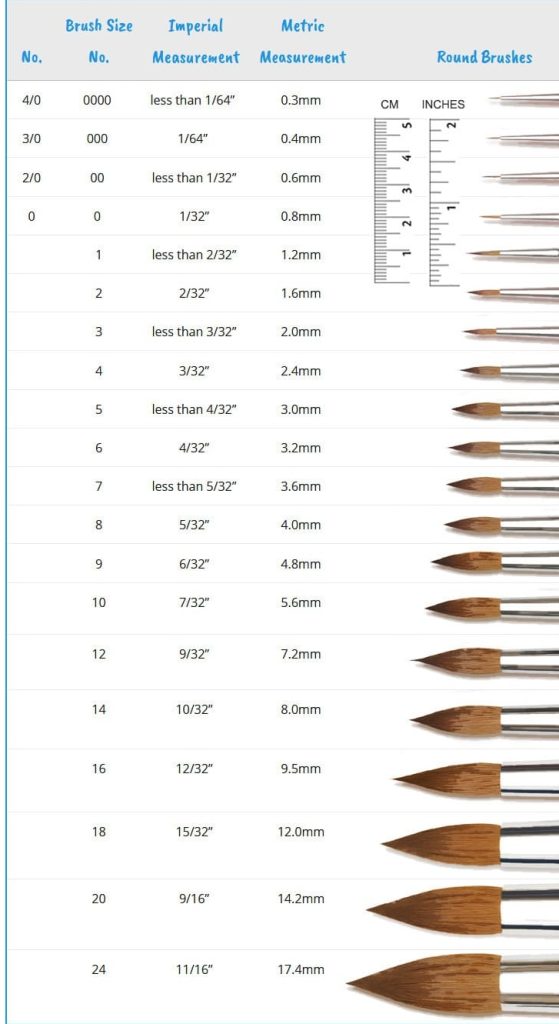
General Guidelines: While specific dimensions can vary, some general guidelines can help DIYers choose appropriate brush sizes based on the task:
Small (20/0 – 5): These very small brushes are best for intricate and fine detail work, miniature painting, and creating thin lines.
Medium (6 – 10): Brushes in this size range are versatile and suitable for general painting tasks, blending colors, and achieving moderate coverage.
Large (12 – 14): These larger brushes are better suited for filling in broad areas and applying bold strokes where less precision is required.
Extra Large (16 – 24): The largest brushes are typically used for covering very large backgrounds and achieving wide coverage on expansive surfaces.
1”-2”: Brushes in this width are often recommended for painting windows and other small trim areas where precision is important.
2”-2 ½”: This size range represents a good middle ground, offering a balance of coverage and control, making them suitable for baseboards, cabinets, furniture, mouldings, as well as window frames, casings, and cutting in edges.
3”: A 3-inch wide brush can be a good choice for applying glossy paints on doors and cabinets, providing a smooth finish over a moderate area.
3”-4”: Larger projects like painting exterior siding, decks, doors, or interior walls often benefit from brushes in this size range, as they can hold more paint and cover larger areas more quickly.
4” and up: For very large, flat surfaces such as expansive walls, siding, and garage doors, brushes 4 inches wide and larger can significantly speed up the painting process.
A word of caution – Given the lack of strict standardization, it is advisable for DIYers to be mindful that a size number from one manufacturer might not perfectly correspond to the same number from another. When purchasing brushes, especially online, it can be helpful to look for any indication of the actual width or dimensions provided by the manufacturer to ensure the chosen brush will be suitable for the intended task.
Choosing the Right Size for the Job: The selection of the appropriate brush size should be guided by the scale and detail requirements of the painting project. For extensive projects involving large surface areas, opting for larger brushes can significantly improve efficiency by covering more area with each stroke, thereby reducing the overall time spent painting and minimizing the appearance of overlapping brush marks. Conversely, for tasks that require intricate detail work or painting in tight, confined spaces, smaller brushes offer the greater control needed to achieve precise results. DIYers should consider the specific dimensions of the surface they are working on; wider brushes are generally more effective for broad, open areas, while narrower brushes are better suited for smaller or more detailed sections. The key is to find a balance between having a brush that can cover the area efficiently and one that provides comfortable control, ultimately minimizing the number of brushstrokes needed to achieve uniform coverage. It’s also worth noting that larger brushes tend to hold more paint than smaller ones, which can be advantageous when working on larger surfaces as it reduces the frequency of needing to reload the brush. Having a selection of different brush sizes in your toolkit can be beneficial, allowing you to adapt to various tasks and project scales as needed.
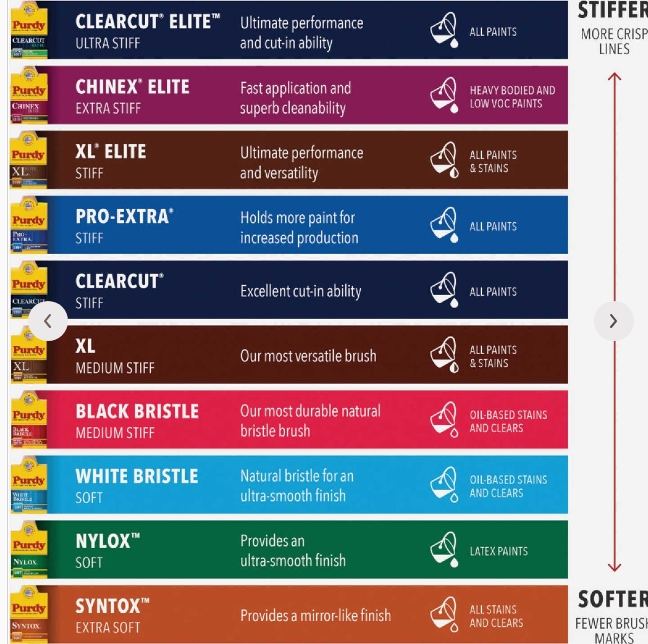
The Inner Workings: Paint Brush Composition Breakdown
A paint brush, seemingly simple in its function, is actually composed of several key parts, each made from specific materials chosen for their properties. Understanding the composition of a paint brush can further inform a DIYer’s choice and care for their tools.
Bristle Materials in Depth: The bristles, or filaments, are the heart of the paint brush, responsible for picking up and transferring paint to the surface. They can be broadly categorized into natural and synthetic materials, each with its own set of characteristics and ideal applications.
Natural Bristles: Traditionally, natural bristles have been sourced from various animals. Hog hair, often referred to as China bristle, is a popular choice for oil and acrylic paints due to its stiffness, coarse texture, and unique flagged tips (split ends) which help to hold and release paint effectively. The highest quality hog bristles are often said to come from the Chungking province in China. These bristles can be either white or black, with black bristles typically being slightly stiffer. Sometimes, hog bristles are blended with ox hair to achieve a smoother paint flow. Ox hair itself, taken from the ears of cattle, is known for its soft, silky texture, good springiness and resilience, though it lacks a very fine tip, making it suitable for medium-grade wash brushes and flat-shaped brushes, and it is often blended with other fibers to enhance its properties. For artists requiring the finest touch, sable hair, particularly from the Kolinsky sable (a type of mink), is highly prized for its fine, tapered point, its ability to hold a good amount of paint due to its belly shape, and its smooth application, making it excellent for thin applications of paint and detailed work in both watercolor and oil painting. Other natural hairs such as badger, horse, goat, and squirrel are also used in brush making, each offering unique characteristics that make them suitable for specific applications, ranging from calligraphy to watercolor washes.
Synthetic Bristles: As an alternative to natural hair, synthetic bristles are typically manufactured from materials like nylon, polyester, or a combination of both. These bristles are particularly well-suited for water-based paints such as latex and acrylics. Synthetic brushes often provide smooth, brushstroke-free finishes, a desirable outcome for many DIY projects. They are also known for their ability to maintain their shape and control, even when exposed to heat, a factor that can be important for exterior painting or projects in warmer environments. Generally, synthetic bristles are more durable and easier to clean compared to their natural counterparts, making them a practical choice for DIYers. Within the realm of synthetic bristles, different materials offer specific advantages. Nylon bristles are recognized for providing smooth finishes and effectively picking up paint, though they may soften in hot weather or with prolonged use in latex paint. Polyester bristles tend to maintain their shape well but might not pick up paint as efficiently. A popular choice among professionals and increasingly among DIYers is the nylon/polyester blend, which seeks to combine the positive attributes of both materials, offering a balance of precise tipping, excellent paint pickup, smooth finish from nylon, and added stiffness and control from polyester. Specialized synthetic materials include Taklon, which is often used as a softer alternative to nylon, mimicking the characteristics of sable and providing a sharp, precise edge, making it suitable for acrylics. Chinex® is a durable synthetic filament known for its superior paint pickup, smooth finish, and ability to maintain stiffness even in humid conditions, as well as its ease of cleaning.
Blended Bristles: Some brushes utilize a combination of both natural and synthetic bristles to leverage the advantages of each type, aiming to provide smooth finishes and overall versatility for DIYers who might work with various types of paint.
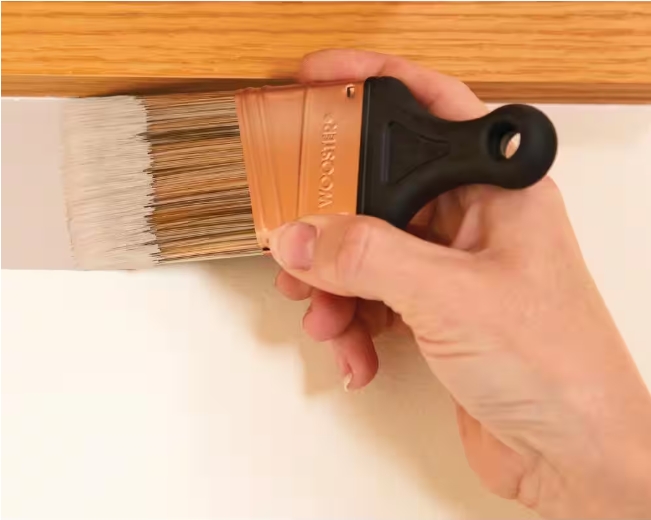
Handle Materials: The handle of a paint brush serves as the interface between the user and the tool, and the material it is made from can affect comfort, grip, and durability. Wood has been the traditional material for paint brush handles for centuries, offering a comfortable grip and often being shaped ergonomically. Some painters, particularly professionals, prefer unfinished wooden handles as they can provide a better grip, especially during extended use. Various types of wood are used, including alderwood, known for being lightweight and moisture-wicking, hardwoods for durability, and even sustainable options like bamboo or bamboo composites. While wood offers a classic feel, it can be susceptible to moisture damage if not properly cared for. Plastic handles, on the other hand, are generally more resistant to moisture and other environmental factors, making them less likely to warp or crack. They are often designed with ergonomic shapes or rubberized grips to enhance comfort, and they tend to be more affordable than wood handles. However, plastic can sometimes become brittle over time. Plastic handles can also be lighter than wooden ones, which some users may find advantageous.
The Role of the Ferrule: The ferrule is the metal band that plays a critical role in connecting the bristles to the handle and ensuring that the bristles are securely held in place, preventing them from falling out during use. While commonly made of nickel-plated steel, higher quality ferrules are often made from copper or stainless steel, as these materials offer better resistance to rust, which can compromise the integrity of the brush. Ferrules made from tin or simply nickel-plated materials are more prone to rusting. For optimal durability, the ferrule should be firmly attached to the handle, ideally through nailing or crimping, with double or triple crimps providing a more secure connection. The introduction of metal ferrules in the 18th and 19th centuries was a significant advancement in paint brush design, leading to stronger, more durable brushes and enabling the mass production of flat brushes, which had a notable impact on art history. In contrast, some less expensive brushes may feature plastic ferrules.

Quality You Can Feel: Identifying a Good Paint Brush
The quality of a paint brush directly impacts its performance, durability, and the overall outcome of a painting project. DIYers can learn to identify a good quality brush by paying attention to several key indicators.
Key Indicators of Quality:
Bristle Flag and Taper: One of the hallmarks of a quality brush, especially natural bristle brushes, is the presence of flagged tips, which are split ends that resemble the split ends of hair. These flagged tips significantly increase the surface area of the bristles, allowing the brush to hold more paint and release it in a smoother, more even manner, contributing to a better finish. Similarly, tapered filaments, whether natural or synthetic, help the paint to flow more effectively from the brush onto the surface, resulting in better coverage and a smoother application. DIYers can often identify quality by looking for machine-distressed or flagged bristle tips that may even appear as a different color at the very end of the bristle.
Spring and Snap: The terms “spring” and “snap” refer to the resilience and responsiveness of the brush bristles. A good quality brush should exhibit flexibility at the tips, allowing them to bend under pressure, but crucially, they should spring back to their original shape once the pressure is released. “Snap” specifically describes how quickly the bristles return to a parallel alignment after being bent at an angle. “Spring,” on the other hand, refers to the overall flexibility of the brush and its ability to maintain its shape during various painting strokes. These qualities are essential for control and achieving consistent strokes.
Paint Holding Capacity: A significant advantage of a high-quality paint brush is its ability to hold a good amount of paint. This allows DIYers to paint for longer periods without needing to constantly reload the brush, leading to a more efficient and smoother workflow. While natural bristles are often recognized for their excellent paint holding capacity, advancements in synthetic fiber technology have led to synthetic brushes that can also hold a substantial amount of paint.
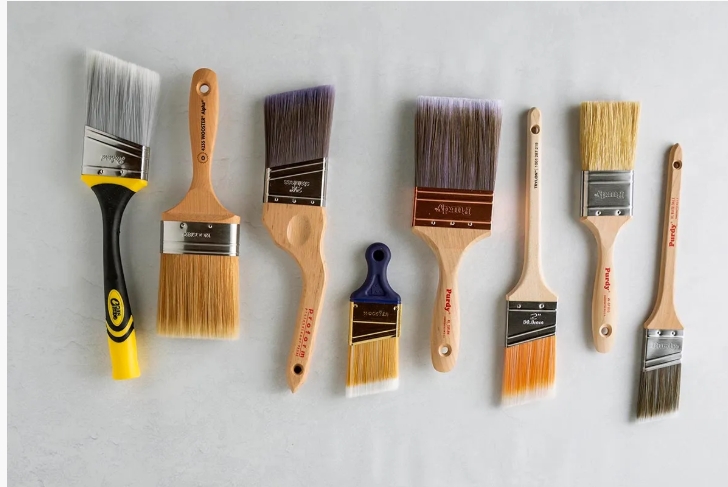
No Gaps: When the bristles of a quality brush are gently pulled apart, they should remain densely packed without revealing a noticeable gap in the center that exposes the handle. A lack of gaps indicates a well-constructed brush with a sufficient amount of bristles, which contributes to better paint application and reduces the likelihood of uneven coverage.
Balance: The overall feel and balance of the brush in the hand are also important indicators of quality. A well-balanced brush feels comfortable to hold and allows for better control, especially during longer painting sessions, reducing hand fatigue.
No Shedding: One of the most frustrating issues with low-quality brushes is the tendency for bristles to come loose and end up in the paint. A good quality brush will have its bristles firmly attached to the ferrule and should not shed excessively during painting, ensuring a cleaner finish.
Construction and Durability: The way a paint brush is constructed plays a crucial role in its overall quality and how long it will last. DIYers should look for a ferrule that is securely attached to the handle, preferably with multiple crimps that hold the bristles tightly in place. The use of higher quality materials for all parts of the brush – including durable bristles, a rust-resistant ferrule made of stainless steel or copper, and a sturdy handle made of hardwood or robust plastic – will contribute to the brush’s longevity. It’s also important to remember that even the best quality brush will not last if it is not properly cared for; therefore, adopting good cleaning and maintenance habits is essential for extending the life of your painting tools. While investing in higher-quality brushes may involve a greater upfront cost, their superior performance and durability often make them a more economical choice in the long run compared to frequently replacing cheaper, lower-quality brushes.
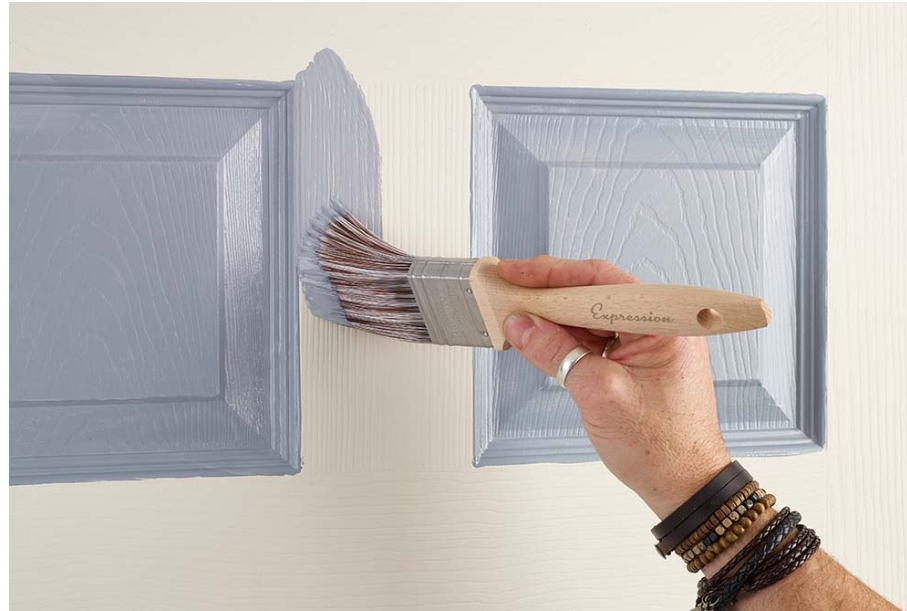
Putting Theory into Practice: Real-World DIY Paint Brush Applications
Understanding the characteristics of different paint brushes is only part of the equation. Seeing how these tools are applied in real-world DIY scenarios can further solidify this knowledge and empower DIYers to make informed choices for their own projects.
Achieving Crisp Lines: The Best Brushes for Cutting In Edges and Corners: When it comes to achieving those sharp, clean lines where walls meet ceilings, or around trim and windows, the angled sash brush is widely considered the top choice. The unique angle of the bristles allows for precise control along edges and in corners, making it easier to “cut in” without getting paint on adjacent surfaces. For particularly tight corners or intricate details, a smaller 2-inch angled brush can offer even greater maneuverability. While angled brushes are the standard for this task, some experienced painters can achieve excellent results with flat brushes as well, though this often comes with practice. For DIYers who struggle with traditional methods, triangle-shaped brushes have been specifically designed to fit into corners and tight spots, potentially simplifying the process. Regardless of the shape, using a good quality brush is as crucial as using quality paint for achieving those coveted crisp lines. The recommended technique involves holding the brush much like a pen, which allows for better control, and dipping only about one-third of the bristle length into the paint to avoid overloading.
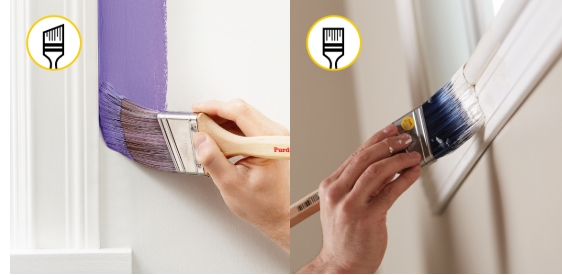
Tackling Large Surfaces: When to Use a Brush Instead of a Roller: While paint rollers are generally the preferred tool for covering large, flat surfaces like walls and ceilings quickly and efficiently, there are instances where a brush is more appropriate or even necessary. Brushes are essential for painting areas with raised or recessed details, as well as for finer details that a roller cannot effectively reach. However, even for large, uninterrupted surfaces, a large flat brush, such as one measuring 4 to 6 inches wide, can be used when a roller is not ideal, for example, on curved surfaces or fences. Brushes also offer more control on uneven surfaces or when a DIYer desires a very smooth finish that may not be achievable with certain types of rollers. In situations where a roller might cause splattering or is simply too cumbersome, a large flat brush can be a viable alternative for covering broad areas, although it may take more time and effort compared to using a roller for very large walls.
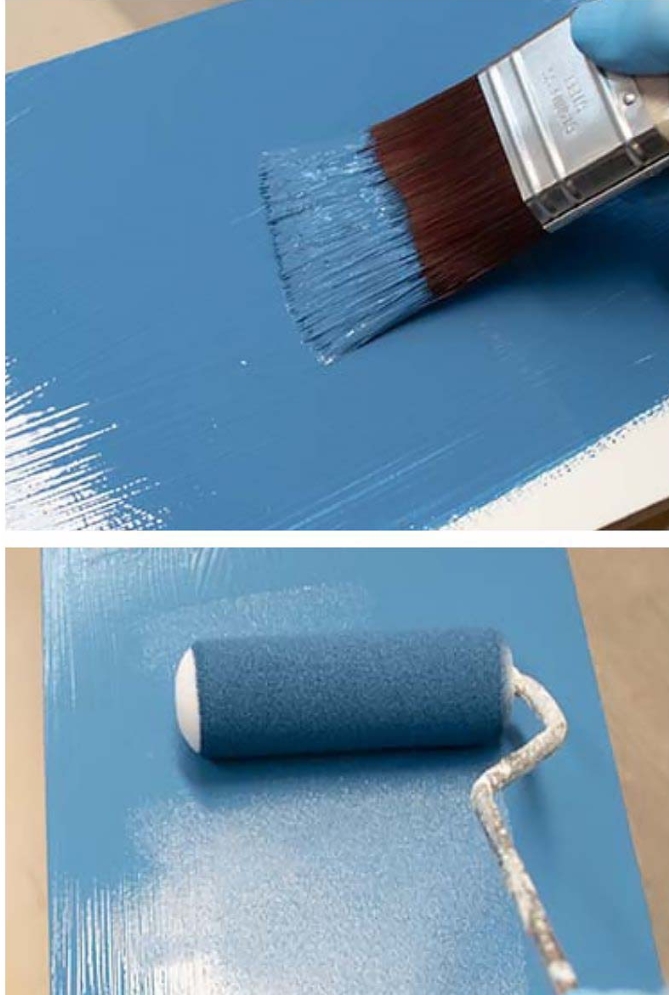
Finishing Touches: Applying Varnish, Stain, and Other Coatings with Precision: When it comes to applying finishing coatings like varnish and stain, the choice of brush can significantly impact the final appearance of the project, whether it’s furniture, cabinetry, or other wooden surfaces. For oil-based varnishes and stains, natural bristle brushes, such as those made from China bristle or badger hair, are generally recommended for their ability to hold and distribute these thicker coatings smoothly and evenly. In contrast, for water-based varnishes, synthetic bristle brushes made of nylon or polyester are often a better choice, as natural bristles can absorb water and splay out, leading to an uneven application. For general varnishing, a chisel-edge brush can provide good control and even coverage. A sash brush with flagged-tip synthetic bristles is particularly useful for getting into corners and handling detailed areas when applying varnish. It’s important to avoid using cheap brushes for varnishing, as they may shed bristles and leave streaks in the finish. For very quick-drying finishes like shellac or lacquer, specialized brushes with extremely fine natural animal hair are often preferred to achieve a long, smooth stroke without brush marks. While foam brushes might be considered for sealer coats or some build coats of varnish, the final coats for a high-quality finish should ideally be applied with a good quality bristle brush, as foam brushes may lack the feel and control offered by bristles.
Beyond the Basics: Using Specialty Brushes for Unique Effects: For DIYers looking to explore more artistic or specialized painting techniques, several specialty brush shapes can be invaluable. Fan brushes, with their distinctive spread-out bristles, are excellent for creating textures like foliage in landscapes or for achieving soft blending effects. Round brushes can be used not only for detail but also for techniques like stippling (creating a textured surface with dots) and dry brushing (using minimal paint on the brush to create a scratchy, textured look). While not technically a brush, palette knives can also be used in DIY painting, particularly with acrylics, to create unique textures, straight lines, and other interesting effects. Experimenting with these specialty tools can add depth and interest to a variety of DIY projects.
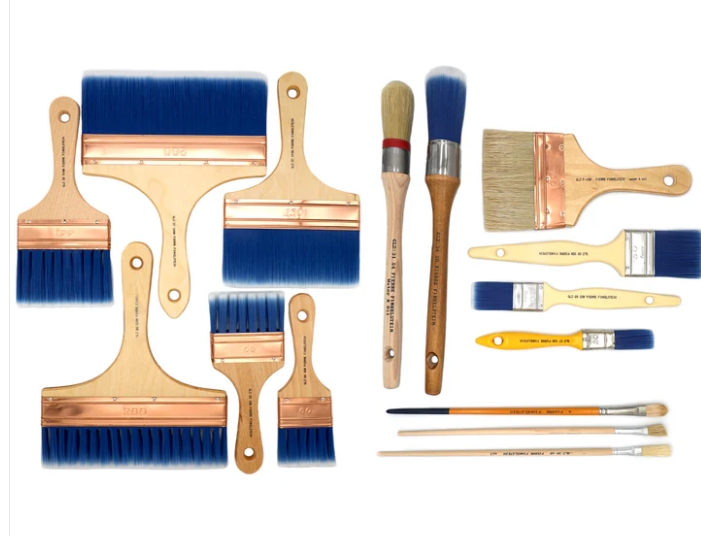
Keeping Your Tools in Top Shape: Cleaning and Storing Paint Brushes
Proper care for your paint brushes is essential for prolonging their lifespan and ensuring they continue to perform well for future projects. This involves thorough cleaning after each use and appropriate storage. The ultimate guide to paint brushes has to have a section on the maintenance of your paint brushes. My best advice is to clean your brushes asap. Fresh paint always cleans faster and easier. It sounds like simple advice, but usually something distracts you and you wait and pay the price.
Step-by-Step Guide to Cleaning Different Types of Paint Brushes:
General Tips: Regardless of the paint type, the most crucial step is to clean your brushes immediately after you finish painting to prevent the paint from drying and hardening in the bristles. It’s also good practice to avoid letting paint reach the ferrule (the metal part), as dried paint in this area can cause the bristles to fray. Before you begin cleaning with water or solvent, always remove as much excess paint from the brush as possible by wiping it on a rag or paper towel. After cleaning, rinse the brush thoroughly under warm or lukewarm water until the water runs clear, indicating that all paint and cleaner have been removed. Finally, reshape the bristles back to their original form while they are still damp to help them maintain their shape as they dry.
Water-Based Paints (Latex, Acrylic): For brushes used with water-based paints like latex and acrylics, the primary cleaning agent is typically warm water combined with mild soap or dish detergent. When rinsing under a tap, it’s best to hold the brush with the bristles pointing downwards to prevent water from seeping into the ferrule, which can loosen the glue holding the bristles. If you encounter dried paint on your water-based paint brushes, soaking them in hot soapy water or even in vinegar can help to soften the paint, making it easier to remove. Some DIYers have also found that using fabric softener can aid in loosening stubborn dried acrylic or latex paint from brush bristles.
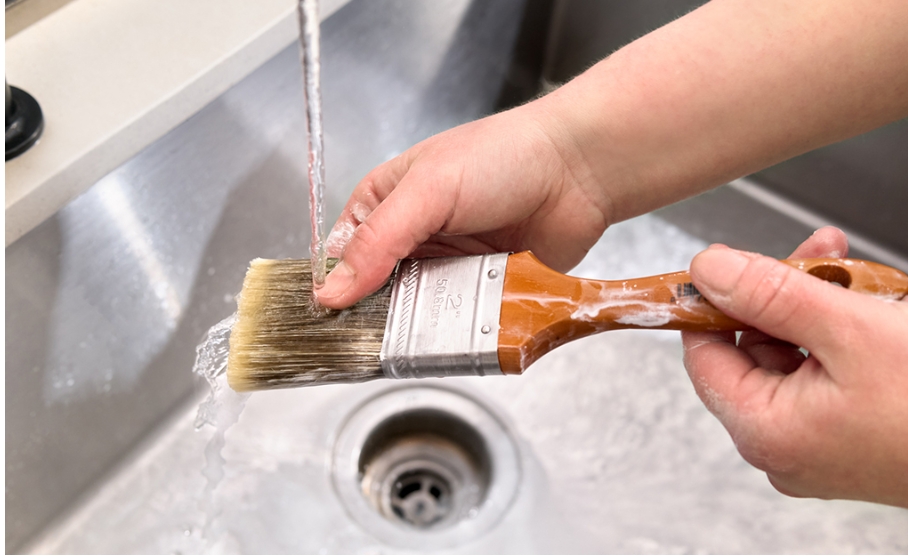
Oil-Based Paints: Cleaning brushes that have been used with oil-based paints requires a different approach, typically involving a solvent recommended for thinning the specific type of paint used, such as mineral spirits or paint thinner. It’s generally advisable to avoid soaking these brushes in solvent for extended periods, as it can damage the bristles over time. If you’ve used a synthetic brush with oil-based paint, you can often follow the solvent cleaning with a wash in soap and water to ensure all residue is removed.
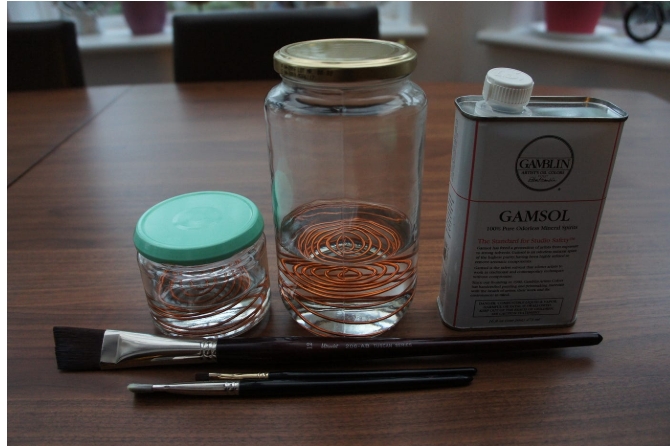
Natural Bristle Brushes: For natural bristle brushes used with oil-based paints, it’s often recommended to avoid cleaning with soap and water, as this can cause the bristles to flare out and lose their shape. Instead, using the appropriate solvent is usually the preferred method. However, if you’ve mistakenly used a natural bristle brush with latex paint, some sources suggest that you can try to restore its softness by cleaning it with warm soapy water and then conditioning the bristles with linseed oil. Other sources indicate that washing natural bristle brushes with soap and water is acceptable if followed by proper conditioning to maintain the bristles’ integrity.
Best Practices for Drying and Storing Brushes to Extend Their Lifespan: After cleaning your paint brushes, proper drying and storage are crucial for maintaining their shape and performance. Begin by shaking out any excess water or solvent from the brush, and then gently pat the bristles dry with a clean towel or cloth. The best way to store your brushes is often upright in a jar or container with the bristles pointing upwards to prevent them from bending or becoming misshapen. Alternatively, hanging brushes by their handles allows any residual water or solvent to drip away from the ferrule, which can help prevent damage. It’s important to ensure that brushes are completely dry before storing them to prevent mildew or other issues. If you still have the original packaging that the brush came in, it’s often a good idea to return the clean, dry brush to it, as these wrappers are designed to help maintain the bristle shape. If you no longer have the original packaging, you can create your own protective covers using paper towels, newspaper, or even by placing the brush between two pieces of cardboard and securing them with a rubber band or tape. For short breaks during a painting project, you can prevent your brushes from drying out by wrapping them tightly in plastic wrap or heavy-duty aluminum foil. Some DIYers even find that refrigerating wrapped brushes can extend this period for a day or two. A crucial point to remember is to never store your brushes upside down with the bristles resting on the bottom of a container, as this can cause the bristles to bend and lose their shape. By following these cleaning and storage practices, DIYers can significantly extend the lifespan of their paint brushes and ensure they remain in good condition for many painting projects to come.
Looking Ahead: Paint Brush Innovations and Trends for 2025
The ultimate guide to paint brushes would not be complete until we learn about what is to come. The world of paint brushes, while seemingly traditional, is not immune to innovation. As we look towards 2025, several emerging materials and technologies are poised to shape the future of these essential DIY tools.
Emerging Materials and Technologies in Paint Brush Manufacturing: The intersection of tradition and cutting-edge technology is leading to exciting developments in paint brush design and manufacturing. Biotechnology is exploring the possibility of creating lab-grown bristles that could potentially combine the desirable characteristics of both natural and synthetic fibers, offering a sustainable and high-performance alternative. The concept of “smart” brushes is also on the horizon, with the potential for brushes embedded with sensors that could communicate with digital canvases, allowing artists and DIYers to blend traditional painting techniques with digital modifications and feedback. Advancements in polymer technology continue to yield synthetic filaments that are increasingly capable of mimicking the paint-holding capacity and feel of natural bristles, offering consistent quality and performance. Manufacturers are also focusing on user comfort and efficiency. Wooster’s Flex & Fit line of paintbrushes, for example, features soft-grip, flexible handles designed to conform to the user’s hand for improved ergonomics during prolonged use. This line also includes a variety of head shapes tailored for specific painting applications, such as triangular heads for corners and trim, round heads for spindles, and flat edge heads for clean lines. Another innovation from Wooster is their Hook & Hold® line, which incorporates a convenient swivel hook that allows the brush to be hung on the side of a paint can or tray, keeping it out of the paint and readily accessible. For those seeking to achieve flawless edges without the hassle of masking tape, tools like the Paint Edger Pro are emerging, aiming to simplify the process of painting along walls and trim. In the realm of miniature painting, the Micro Mark Brush Cam is an intriguing development – a pen-sized device that attaches to a paintbrush and wirelessly transmits a magnified video feed to a phone or tablet, providing a highly detailed, real-time view of the work in progress.
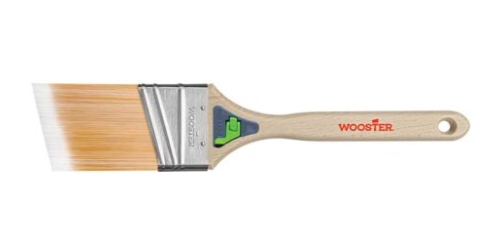
Sustainable and Eco-Friendly Options for the Conscious DIYer: With a growing global emphasis on sustainability, the paint brush industry is also seeing a rise in eco-conscious options for DIYers who want to minimize their environmental impact. This trend includes an increased focus on eco-friendly paints themselves, with more low-VOC (volatile organic compounds) and zero-VOC formulations becoming available. In terms of brush materials, manufacturers are exploring and utilizing recycled materials and biodegradable components in both handles and bristles. For instance, handles made from sustainable bamboo or bamboo composites like Evergood are gaining popularity as environmentally responsible alternatives to traditional wood. Synthetic filaments are also viewed as a cruelty-free and vegan option, providing a substitute for natural animal hair in brushes. Even the packaging of paint brushes is becoming more sustainable, with some companies using compostable or recycled materials for their packaging. On the manufacturing side, companies like Borghi are innovating with concepts like ECO-FILL, which uses a polymer anchor system in brush making to facilitate the creation of fully recyclable brush products. These advancements indicate a growing commitment within the industry to provide DIYers with high-quality tools that are also environmentally responsible.
Choosing the Right Brush for Your Project: A Comprehensive Table
| Project Type | Brush Shape | Bristle Type | Size Recommendation | Key Features |
| Walls | Flat | Synthetic (Nylon/Poly blend) | 3”-4” or wider | Good coverage, smooth finish, easy to clean |
| Trim & Edges | Angled Sash | Synthetic (Nylon/Poly blend) | 1”-2 ½” | Precision cutting, clean lines |
| Furniture (Flat) | Flat or Oval | Synthetic or Blended | 2 ½” – 3” | Smooth coverage on flat surfaces |
| Furniture (Details) | Round or Pointed Sash | Synthetic or Natural | Small (sizes 2-8) | Intricate work, carvings |
| Cabinets | Flat or Foam | Synthetic | 2 ½” – 3” | Smooth, streak-free finish |
| Oil-Based Paints/Stains | Flat or Angled Sash | Natural (Hog/China) | Varies | Excellent paint pickup and release for oil-based coatings |
| Water-Based Varnishes | Flat or Angled Sash | Synthetic | Varies | Prevents splaying, smooth application |
| Craft/Art Details | Round or Liner | Synthetic or Sable | Very Small (0-5) | Fine lines, intricate details |
| Textured Surfaces | Flat or Bristle | Stiff Synthetic or Hog | Varies | Working paint into crevices |
| Cutting In Ceilings | Angled Sash | Synthetic | 2”-3” | Reaching tight spaces, even paint line |
Conclusion: Your Guide to Confidently Choosing the Perfect Paint Brush for Any DIY Project in 2025
The journey through the world of paint brushes reveals a landscape rich with options, each designed with specific purposes and materials in mind. As this ultimate guide to paint brushes has illustrated, the selection of the right paint brush is far from arbitrary. Understanding the nuances of brush shapes, bristle types, sizing conventions, and the materials that constitute these tools empowers DIY enthusiasts to approach their painting projects with greater knowledge and confidence. The characteristics of a brush, from the flagged tips of its bristles to the ergonomic design of its handle, all contribute to the final outcome of your work.
DIYers are encouraged to carefully consider the specific requirements of each project, paying close attention to the type of paint or coating they will be using and the nature of the surface they will be painting. Whether tackling large walls with a wideflat brush and synthetic blend bristles for a smooth latex finish, or delicately applying varnish to furniture with a fine natural bristle brush, the informed choice of tool will make a tangible difference. Moreover, the longevity and performance of your paint brushes are significantly influenced by the care they receive. By adopting proper cleaning and storage techniques, DIYers can ensure that their brushes remain in optimal condition for project after project, representing a wise investment over time.
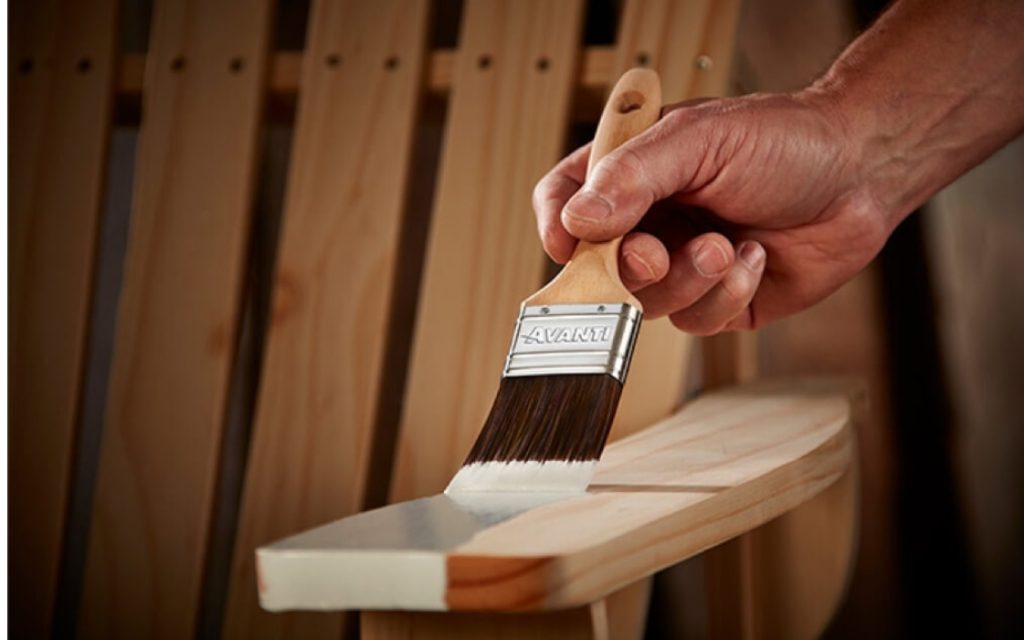
Looking ahead to 2025, the paint brush industry continues to evolve, with innovations in materials and design promising even greater efficiency and sustainability. From ergonomic handles to eco-friendly materials, these advancements cater to the needs of the modern DIYer who seeks both performance and responsibility. Armed with the knowledge presented in this guide, individuals can confidently navigate the paint brush aisle, whether online or in a local store, and select the perfect tools to bring their creative visions to life, achieving professional-quality results in all their DIY painting endeavors throughout 2025 and beyond. Also check out this other popular guide: Guide to purchase your first 3D printer
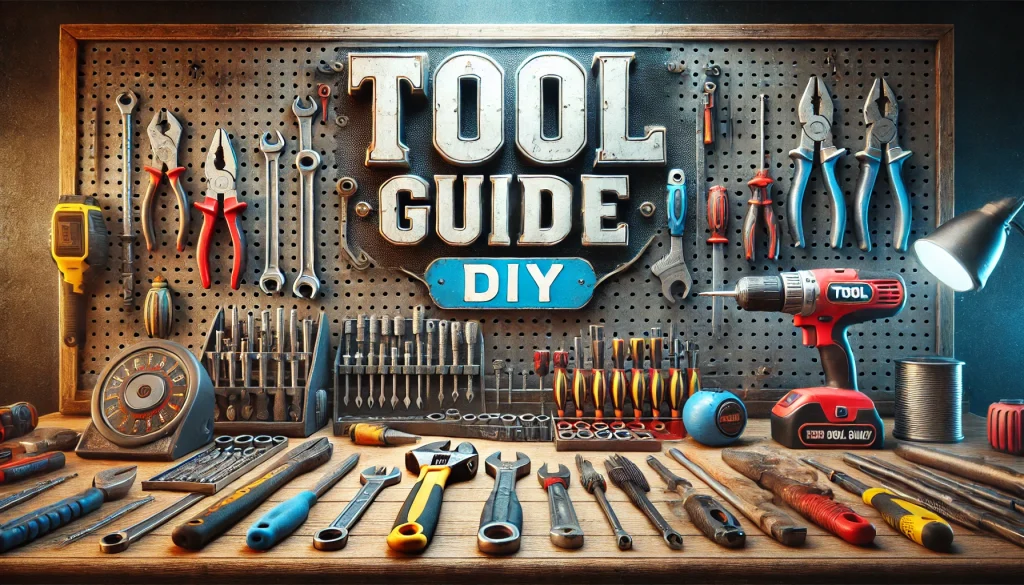
A special thanks to the following resources of information: fusionmineralpaint.comUltimate Paint Brush Guide Choosing the Right Brush – Fusion™ Mineral Paint Opens in a new window woosterbrush.comHow To Choose The Right Paintbrush – Wooster Brush Opens in a new window sisupainting.comThe Ultimate Guide to Choosing Paint Brushes and Rollers Opens in a new window benjaminmoore.comThe Best Paint Brushes for Interior Projects – Benjamin Moore Opens in a new window cowlingandwilcox.comThe Ultimate Guide to Paintbrushes for Acrylics – Cowling & Wilcox Opens in a new window en.wikipedia.orgPaintbrush – Wikipedia Opens in a new window proartebrushes.comHow do paintbrush sizes work? – Pro Arte brushes Opens in a new window homedepot.comBest Paint Brushes for Any Project – The Home Depot Opens in a new window sherwin-williams.comHow to Choose Paint Brushes & Rollers – Sherwin-Williams Opens in a new window princetonbrush.comBrush Anatomy – Princeton Brush Company Opens in a new window woosterbrush.comHow To Match Paintbrush To Project – Wooster Brush Opens in a new window shop.zenartsupplies.coWhat Are the Different Paint Brush Sizes? – ZenARTSupplies | Inspiring the Artist in Everyone Opens in a new window jacksonsart.comUnderstanding Brush Sizes -Jackson’s Art Blog Opens in a new window novacolorpaint.comUnderstanding Paintbrush Bristle Materials and Their Uses – Nova Color Opens in a new window cool.culturalheritage.orgJAIC 1999, Volume 38, Number 1, Article 3 (pp. 21 to 32) – Conservation OnLine Opens in a new window dickblick.comBrush Fiber Differences | BLICK Art Materials Opens in a new window buyepifanes.comRedtree China-Ox Paint and Varnish Brush Collection – BuyEpifanes.com Opens in a new window purdy.comPurdy® Ox Hair Ox-O-Thin™ Trim Brushes Opens in a new window lectampa.orgBristle Basics: Synthetic vs. Natural Paint Brushes – Life Enrichment Center Opens in a new window fauxmasters.comNylon/Polyester Brush – Faux Painting Training & Education Opens in a new window carolinabrush.comSynthetic Brush Fibers & Filaments Opens in a new window cohwabrush.comSynthetic Filament Paint Brushes | Quality Nylon Paint Brush | Nylon Paint Brush China – Paint Brush Manufacturer Opens in a new window justpaint.orgAcrylic, Oil, and Watercolor Brushes | Just Paint Opens in a new window kendo.comWooden Handle Vs. Plastic Handle Paint Brushes: Which Is Better? – KENDO Opens in a new window brushcreation.comChoosing a Brush Handle Opens in a new window toolsforworkingwood.comThe Art of Brushmaking and The Gramercy Tools Finishing Brush – Ferrules Opens in a new window business.walmart.com10pcs Wooden Handle Paint Brushes Plastic and Bristle Paintbrush for Wall and Furniture Paint – Walmart Business Supplies Opens in a new window artsy.net10 Types of Paintbrushes Every Artist Should Know – Artsy Opens in a new window princetonbrush.comAnatomy of a Paintbrush – Princeton Brush Company Opens in a new window sonnysdirect.comThreaded Hardwood Plastic Brush Handle, 5ft L, Pack of 6 – Sonny’s Enterprises Opens in a new window ravensupply.comFlat Blended Polyester Wood Handle Paint Brush – Raven Industrial Supply Opens in a new window youtube.comHow the Humble Ferrule Influenced Art History | BLICK – YouTube Opens in a new window thepaintstore.comHow to Care for Your Paint Brushes: A Complete Guide for Longevity – ThePaintStore.com Opens in a new window paintbrusha.comSynthetic Paint Brushes Opens in a new window trekell.comTrekell Hog Bristle Brushes – Best Quality for Oil Painters Opens in a new window sherwin-williams.comChoosing the Right Brush – Sherwin-Williams Opens in a new window money.yahoo.comThe Best Bristle Brushes for Oil and Acrylic Paints – Yahoo Money Opens in a new window jenniferbranch.comHow to Choose a Watercolor Brush – Jennifer Branch Painting Gallery Opens in a new window the-decorator.co.ukKey considerations for a good quality paint brush – The Decorator Opens in a new window thesydneyartstore.com.auHow To Identify High-quality Paint Brushes? – The Sydney Art Store Opens in a new window assets.testequity.comBristle Brush Material Descriptions – TestEquity Opens in a new window purdy.co.ukWhat makes a good quality paint brush? | Professional painting tools – Purdy UK Opens in a new window noteaccess.comBrush Hairs and Bristle – Notebook Opens in a new window grabieart.comHow to Choose the Right Paint Brush – Grabie Opens in a new window jennarainey.comThe Ultimate Guide to the Best Watercolor Brushes – Jenna Rainey Opens in a new window thisoldhouse.comHow To Choose the Best Paintbrush for Your Projects – This Old House Opens in a new window alabamaart.comThe Importance of Quality Brushes in Artistic Expression – Alabama Art Supply Opens in a new window inspirationspaint.com.auCutting In: Top tips to get the perfect edge – Inspirations Paint Opens in a new window thisoldhouse.comHow To Cut In Paint Edges With a Brush – This Old House Opens in a new window reddit.comBest brush for cut ins? : r/paint – Reddit Opens in a new window erinspain.comThe Best Paintbrush for Corners, Trim, Nooks & Crannies – Erin Spain Opens in a new window mightydeals.comBest Paint Brush for Cutting in Ceiling: Expert Picks for Precision Work – Mighty Deals Opens in a new window woodcraft.comBrushing Varnish: Tips for a Flawless Finish – Woodcraft Opens in a new window toolsforworkingwood.comHow To Select The Best Brush for Finishing – Tools for Working Wood Opens in a new window jclicht.comTop Types of Brushes for Painting Walls: Your Guide to Perfect Results | JC Licht Opens in a new window support.jamestowndistributors.comWhich brush type do I use for varnish or marine wood finishes? – Jamestown Distributors Opens in a new window oakcitycoatings.comHow to Choose a Paint Brush for Your DIY Project | Oak City Coatings Opens in a new window sawmillcreek.orgPremium Brushes for Varnish – what & where to buy – Sawmill Creek Opens in a new window novacolorpaint.comComplete Guide for Buying Best Brushes for Painting Walls – Nova Color Opens in a new window benjaminmoore.comwww.benjaminmoore.com Opens in a new window simplegreen.comFJ | Household | Diy | Paint Brushes – Simple Green Opens in a new window reddit.comWhat are the basic techniques of using paintbrushes and acrylic paint? – Reddit Opens in a new window countrydesignstyle.comThe ultimate guide on how to use a paint brush tips – Country Design Style Opens in a new window letsmakeart.comHow To Use Different Types of Paintbrushes – Let’s Make Art Opens in a new window tiktok.comUnderstanding the Fan Paint Brush for Painting Techniques – TikTok Opens in a new window proartebrushes.comWhat are the best paintbrushes for beginners? – Pro Arte brushes Opens in a new window artdiscount.co.ukBeginners guide to paintbrushes – Art Discount Opens in a new window stepbysteppainting.netAll About Brushes For Acrylic Painting – Beginner Guide Opens in a new window purdy.comPaint Care & Cleanup – Purdy Opens in a new window princetonbrush.comBrush Care and Cleaning – Princeton Brush Company Opens in a new window homedepot.comwww.homedepot.com Opens in a new window homedepot.comHow to Clean Paint Brushes – The Home Depot Opens in a new window woosterbrush.comwww.woosterbrush.com Opens in a new window blackdogsalvage.comCaring for Natural Bristle Brushes – Home of “Salvage Dawgs” Opens in a new window instructables.com3 Ways to Clean Paint Brushes : 4 Steps (with Pictures) – Instructables Opens in a new window livingetc.comI use my dad’s paintbrush cleaning tips for every DIY project | Livingetc Opens in a new window reddit.comPaint Brushes: How to care for them? : r/Warhammer – Reddit Opens in a new window lilyfieldlife.comHow to Clean your Paint Brush with Vinegar – Lilyfield Life Opens in a new window thewoodwhisperer.comHow to Clean a Natural Bristle Brush – The Wood Whisperer Opens in a new window woodworking.stackexchange.comHow do I properly care for my paintbrushes? – Woodworking Stack Exchange Opens in a new window reddit.comWhat’s the most efficient way to clean paint brushes? : r/HomeImprovement – Reddit Opens in a new window woosterbrush.comCleaning Tips – Wooster Brush Opens in a new window benjaminmoore.comHow to Clean Paint Brushes and Store Them to Last Longer | Benjamin Moore Opens in a new window reddit.comHow do you keep your brushes in working condition? I bought these a few months ago but have only used them a dozen times or so and wash them every time. Do they fray with time? : r/Warhammer40k – Reddit Opens in a new window thisoldhouse.comTips for Cleaning and Storing Paint Tools – This Old House Opens in a new window diy.stackexchange.comHow can I preserve paint and brushes between projects? Opens in a new window youtube.comHow to Clean and Store Paint Brushes | Benjamin Moore – YouTube Opens in a new window diy.stackexchange.comPaint brush storage – Home Improvement Stack Exchange – DIY StackExchange Opens in a new window nucoatpainting.comEco-Friendly Paint Options for Homes and Businesses in 2025 Opens in a new window brushexpert.comCreative Impulse Award: The Winners 2025 – Brush Expert Opens in a new window youtube.comI Tested the “Reinvented” Paint brush so you don’t have to – YouTube Opens in a new window china-bristle.comNext generation of eco-friendly paint brushes drives you degradable brush filament world Opens in a new window brushwaremag.comABMA 2025 Innovation Award Nominees: Borghi and Wooster – Brushware Opens in a new window amazon.com2024 New Painting Trimmer Edger Tools for Walls High Ceilings with Edger Paint Brush Kit, Bucket Edge Paint Roller Splatter Shield for Trim Corner Painting Cut in Tool (Handheld) – Amazon.com Opens in a new window arthouseandcompany.comEco Friendly Paint Brush Set – ArtHouse & Co. Opens in a new window painterslink.com.auLatest Paint Technology and Products 2025 – Painters Link Group Opens in a new window uppaint.co.nzHaydn® UP™ Professional Flat Paint Brush Opens in a new window china-bristle.comThe Future of Paintbrush Bristle and Filament: A Fusion of Tradition and Innovation Opens in a new window craftamo.comBamboo Paint Brushes: The Eco-Friendly Choice for Artists – Craftamo Opens in a new window woosterbrush.comNew Products – Wooster Brush Company Opens in a new window youtube.comBox Town Team’s New Tools for Painters 2025: Perfect Lines & Multi-Holster Innovation! Opens in a new window vocal.mediaHow Paint Brushes Have Evolved Through History | Art – Vocal Media
